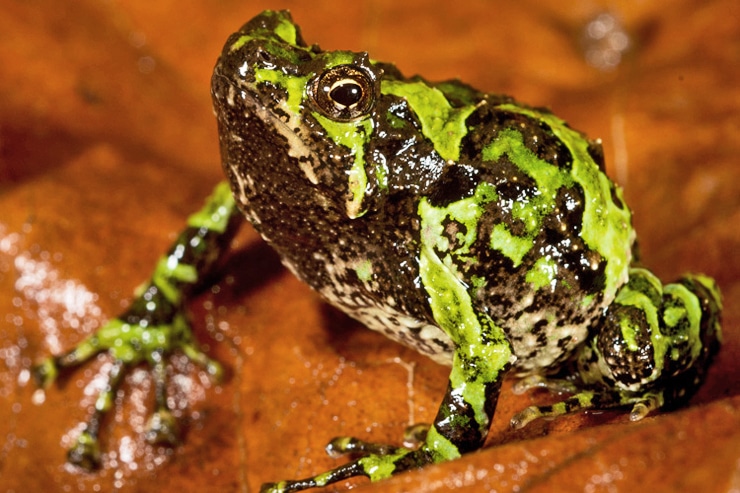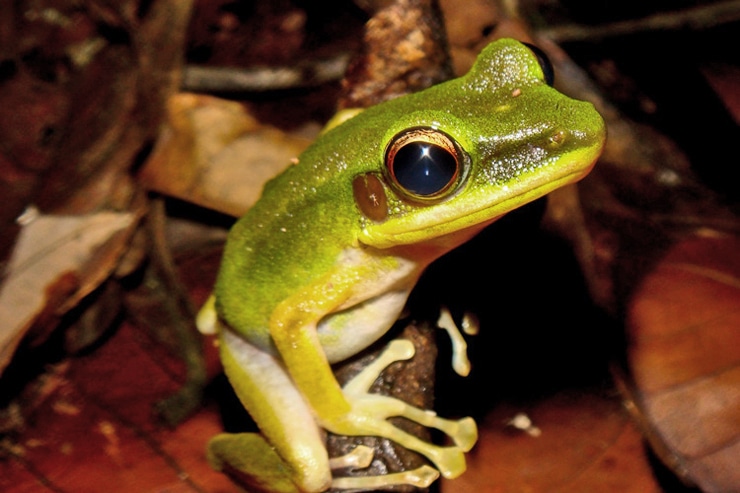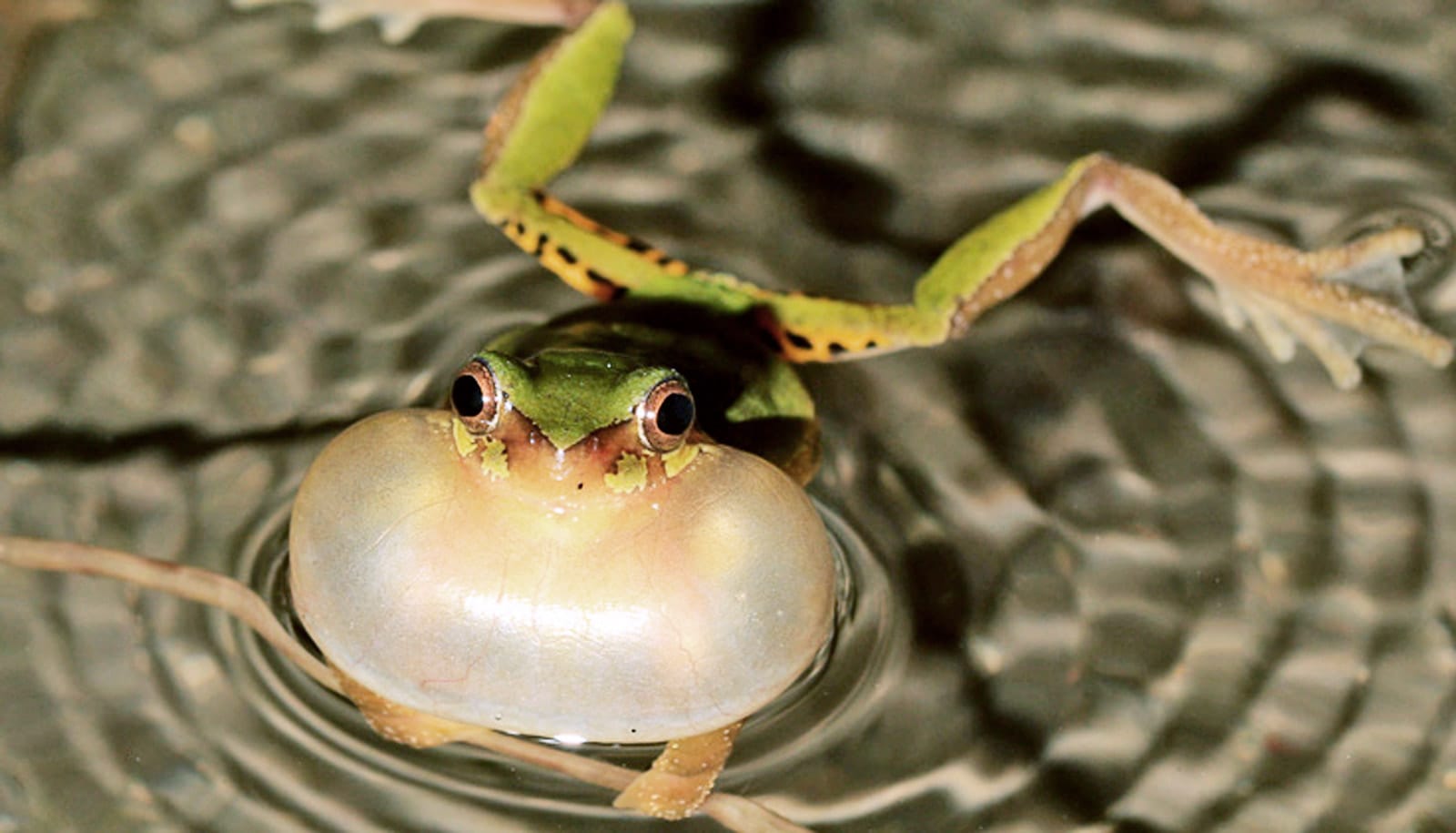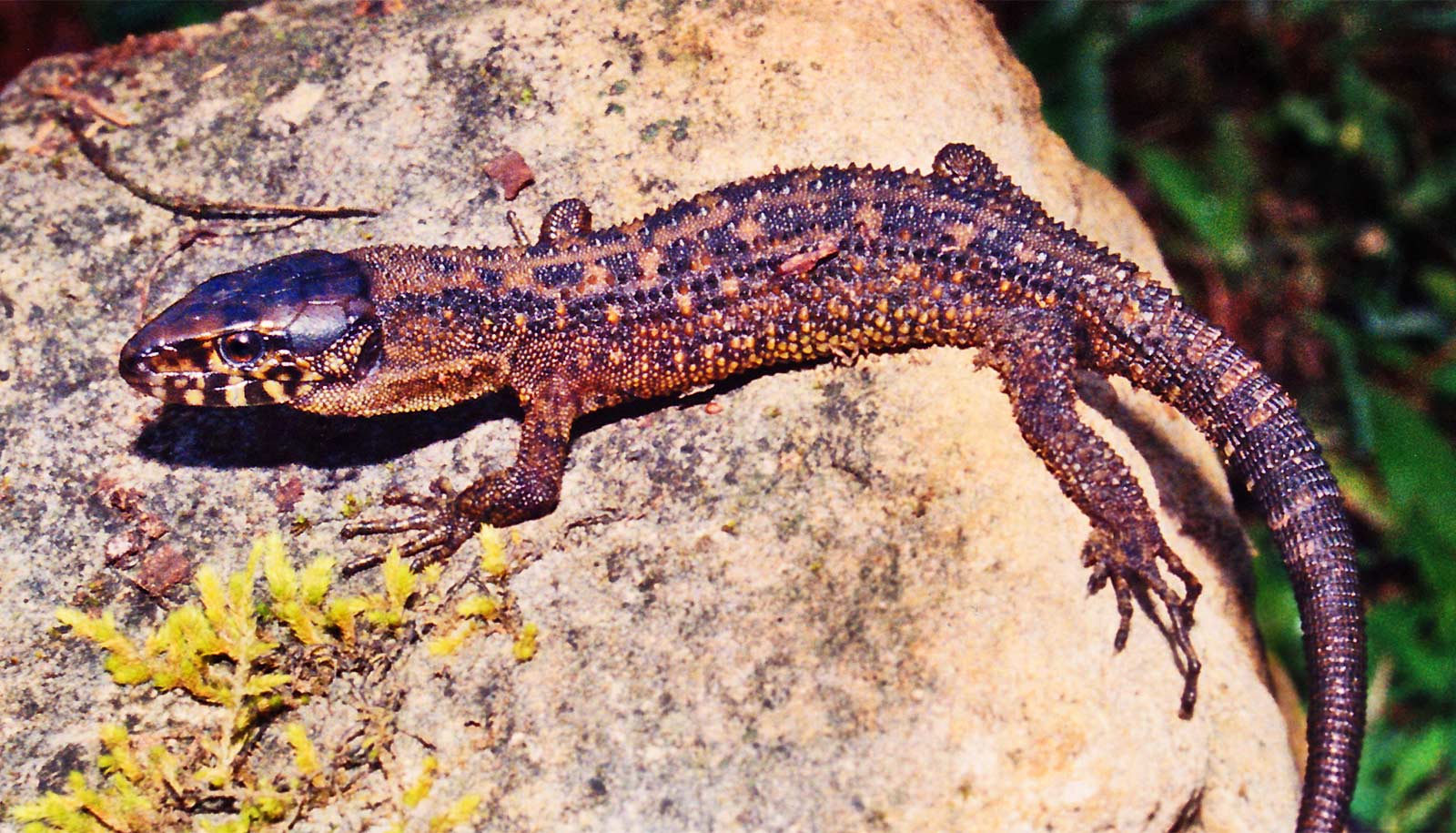If the comet or asteroid calamity had not wiped the planet clean of dinosaurs and most other terrestrial life 66 million years ago, 88 percent of the frog species we have today wouldn’t be here.
A new study shows that nine out of 10 species of frogs descended from just three lineages that survived the mass extinction.
The results, published in the Proceedings of the National Academy of Sciences, are a surprise, researchers say, because previous studies of frog evolution pinpointed the blossoming of the main frog lineages today to about 35 million years earlier, in the middle of the Mesozoic era.

The new analysis of 95 genes from frogs within 44 of 55 living families shows that these three lineages started to take off precisely at the boundary between the Cretaceous and Paleogene periods—the K-Pg boundary, formerly called the KT boundary—when the last mass extinction occurred, and not 100 million years ago.
New frog species likely radiated rapidly throughout the world because so many environmental niches were available after the animals occupying them disappeared, says herpetologist and coauthor David Wake, professor of the graduate school at the University of California, Berkeley, and a curator of the Museum of Vertebrate Zoology.
“We think the world was quite impoverished as a result of the KT event, and when the vegetation came back, angiosperms dominated. That’s when trees evolved to their full flowering,” Wake says. “Frogs started becoming arboreal. It was the arboreality that led to the great radiation in South America in particular.”

Trees are an ideal habitat for frogs not only because they allow them to escape from terrestrial predators, but also because their fallen leaves provide protection while the frogs are on the ground, and also offer breeding habitat and plenty of food, such as insects. Trees and other flowering plants took off in the late Cretaceous, and were ready for exploitation by frogs after they recovered from the extinction.
Another adaptation that became popular was direct development, that is, producing young without a tadpole stage, which is standard for about half of all frog species today.
“The majority of the frogs that thrive now are thriving because of direct development of eggs in terrestrial situations,” Wake says. “It is a combination of direct development and use of arboreal habitat that accounts for a great deal of the radiation.”
Male glassfrogs could win ‘dad of the year’
Previous genetic analyses of frog evolution focused on mitochondrial DNA and how long the molecular clock had been ticking for mitochrondrial genes.
However, analysis of molecular evolution in mitochondrial DNA often produces dates for lineage divergence that are too old. In the case of frogs, such analysis pinpointed the radiation of most living frogs at about 100 million years ago, which was a puzzle, since Earth’s environment was stable at that time. A changing environment typically drives evolution.
‘Made it through on luck’
The new analysis, based on data assembled primarily by graduate student Yan-Jie Feng at Sun Yat-Sen University in Guangzhou, China, focuses on the sequences of 95 genes located on chromosomes in the nucleus and how they changed over time.
Feng and colleagues gathered genetic data from 156 frog species and combined this with earlier information about two genes from 145 different frogs, for a total of 301 distinct frog species from all 55 families of frogs. The data were calibrated using 20 dates derived from fossils and Earth historical events.
“This certainly draws renewed attention to the positive aspects of mass extinctions…”
The findings show that perhaps 10 groups of frogs survived the extinction, but only three of them (Hyloidea, Microhylidae, and Natatanura) flourished and diversified to claim habitats and niches around the world.
Nothing other than luck distinguishes the survivors, Wake says. Remnants of the other surviving lineages are scattered in isolated spots around the world, but are just as diverse today in their habitats and breeding strategies as the 88 percent.
Two of the three surviving lineages that subsequently radiated widely came out of Africa, which remained intact as the continents shifted around over the ensuing eons, with the breakup of Pangea and then Gondwana to form the continents we see today. The African rift zone and mountain building in West Africa generated new habitats for the evolving frogs, Wake notes. The third, Hyloidea, radiated throughout what became South America.
These frogs are already close to their max heat
Today’s frogs, comprising more than 6,700 known species, as well as many other animal and plant species are under severe stress around the world because of habitat destruction, human population explosion, and climate change, possibly heralding a new period of mass extinction. The study provides a clear message for future generations.
“These frogs made it through on luck, perhaps because they were either underground or could stay underground for long periods of time,” Wake says. “This certainly draws renewed attention to the positive aspects of mass extinctions: They provide ecological opportunity for new things. Just wait for the next grand extinction and life will take off again. In which direction it will take off, you don’t know.”
Other coauthors are from the University of Texas at Austin, the Florida Museum of Natural History, and Sun Yat-Sen University. The National Science Foundation, the National Natural Science Foundation of China, and the National Youth Talent Support Program and National Science Fund for Excellent Young Scholars of China funded the work.
Source: UC Berkeley



